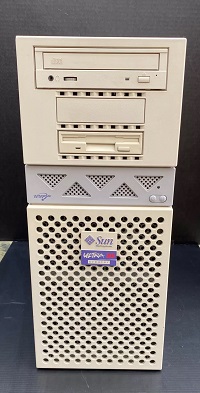
Launched in 1999, the UltraSPARC 30 was a significant advancement in Sun Microsystems' line of high-performance processors, designed to cater to the growing demands of enterprise computing. As a part of the UltraSPARC family, this processor offered enhanced capabilities, making it suitable for a wide range of applications, from scientific computing to enterprise resource planning (ERP) systems.
Architectural Innovations
The UltraSPARC 30 was built upon a 64-bit RISC architecture, which provided substantial performance improvements over its predecessors. Operating at clock speeds of up to 500 MHz, the UltraSPARC 30 incorporated several key architectural features that enhanced its computational power:
- Dual-Processor Capability: One of the most notable features of the UltraSPARC 30 was its support for dual-processor configurations. This capability allowed for increased processing power, enabling organizations to scale their computing resources according to their needs.
- Enhanced Cache Structure: The UltraSPARC 30 featured a 1 MB Level 2 cache, which significantly improved data access speeds and reduced latency. This larger cache was crucial for handling the complex and data-intensive workloads typical in enterprise environments.
- Improved Memory Bandwidth: With a memory bandwidth of up to 1.6 GB/s, the UltraSPARC 30 was designed to support applications that required rapid access to large datasets. This capability was essential for scientific simulations and real-time data processing, where speed is critical.
- Robust Floating-Point Performance: The UltraSPARC 30 included an advanced floating-point unit, enabling it to perform complex mathematical calculations efficiently. This made it particularly well-suited for applications in engineering, finance, and scientific research.
Applications and Impact
The UltraSPARC 30 was integrated into Sun Microsystems' high-end workstations and servers, including the Sun Enterprise series. These systems were renowned for their reliability, availability, and serviceability (RAS), making them ideal for mission-critical applications across various sectors, including healthcare, finance, and telecommunications.
Organizations utilized the UltraSPARC 30 to run demanding applications such as databases, enterprise software, and high-performance computing tasks. Its dual-processor capability allowed businesses to enhance their computational power significantly, leading to improved performance and efficiency in operations.
Legacy and Influence
The UltraSPARC 30 played a critical role in solidifying Sun Microsystems' position as a leader in high-performance computing. Its architectural innovations laid the groundwork for future processors, such as the UltraSPARC III, which offered even greater performance, scalability, and energy efficiency.
Furthermore, the UltraSPARC 30 was instrumental in the transition to 64-bit computing in enterprise environments. As organizations increasingly sought to manage larger datasets and more complex applications, the UltraSPARC 30 provided a robust solution, helping drive the adoption of 64-bit operating systems and software.
Conclusion
The UltraSPARC 30 was more than just a processor; it was a pivotal technology that shaped the landscape of high-performance computing at the end of the 1990s. With features like dual-processor support, enhanced caching, and improved memory bandwidth, it empowered enterprises to tackle increasingly complex computational challenges.
The legacy of the UltraSPARC 30 continues to influence modern processor design, highlighting the importance of innovation in meeting the demands of today’s data-driven world. As organizations evolve in their computing needs, the advancements introduced by the UltraSPARC 30 remain a testament to the enduring impact of high-performance architectures in the ever-changing landscape of technology.